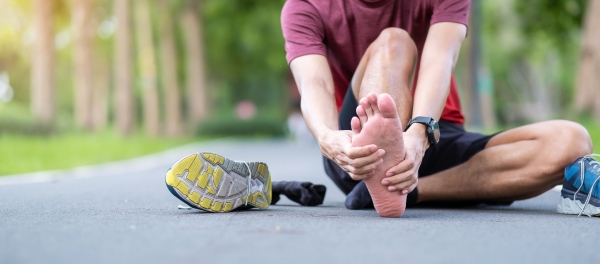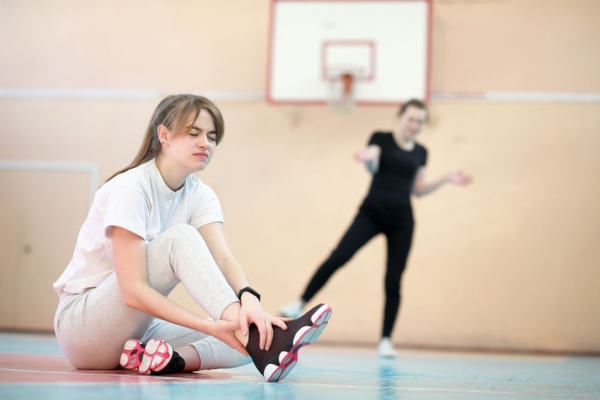Connect With Us
Blogs

Sports Injuries (2)
At Superior Foot & Ankle Care Center we’re sure many of our Los Angeles County patients are following the athletes and events connected to the long-awaited Summer Olympics scheduled to take place in Tokyo later this summer. Along with thrilling competition, there’s sure to be some sports injuries such as the one sustained by Canadian shot put thrower, Brittany Crew. Crew was competing in Arizona at the Tucson Elite Classic in May when she suffered a freak accident that resulted in a Grade 2 sprain to her right ankle. When her left foot hit the toe board it slid, unexpectedly shifting all the force to the right ankle. Crew remembers hearing a pop and then her ankle went numb.
Treating Ankle Sprains
Fortunately, Crew is well on the road to recovery, and it looks like she should be in top form to compete in the Olympics. She has, however, decided to sit out the Olympic Trials in order to give her ankle additional time to heal. This wise move exemplifies one of the most important factors in recovering from an ankle injury: not rushing the rehabilitation. Unfortunately, many patients cut physical therapy short once their ankle stops hurting and this leads to the number one cause of repeated ankle sprains which is not recovering fully from an initial sprain. In addition to overstretched ligaments, the muscles that surround and support the ankle need to get stronger and this takes additional time. Other steps to achieving a full recovery include:
- Get medical treatment as soon as possible—ankle sprains require professional assessment. The severity of the sprain may not be obvious to the patient. Sometimes a sprain injury has also caused a fracture. Continuing to walk or play on a sprained ankle can lead to a worse injury. Contact our Long Beach office at (562) 420-9800 office for an appointment as soon as possible after an ankle-twisting injury so that our podiatrists, Victoria M. Foley and Dr. Constance Ornelas, can evaluate your injury and determine the best course of treatment.
- Use RICE—this self-treatment regimen is the best way to control pain and prevent further damage while you await your appointment. It stands for Rest, Ice, Compression, and Elevation.
- Follow the podiatrist’s instructions—you may need to take a break from a favorite sport to allow time to heal, use an ankle brace, or complete other treatment protocols to get back to full and normal use of your ankle but—take it from an Olympic athlete—it’s worth it!
At Superior Foot & Ankle Care Center we know that our Los Angeles County patients have suffered through the pandemic shutdowns. One of the most affected are our young patients. As restrictions ease, children are overjoyed to be able to get back to sports, but parents need to be vigilant about potential foot problems. After an especially long period of inactivity, young feet are more likely to experience foot pain and are vulnerable to some common podiatric disorders. Here’s how parents can help:
Update Sports Shoe
The single biggest factor in podiatric health, even in young children, is shoe choice. With fast-growing feet, chances are your child will need new athletic shoes for the sport they plan to participate in. Shop for shoes that are designed specifically to accommodate their chosen sport. Basketball sneakers, for example, offer extra ankle support while running shoes have more cushioning to absorb the stress of repetitive pounding. Fit is just as important as style. Be sure to:
- Have both of your children’s feet professionally measured
- Shop for shoes at the end of the day after children have been active—that’s when their feet will be at their largest
- Bring or have your child wear the socks he or she will use with their athletic shoes to ensure a more accurate fit
- Try on both shoes and have your child walk around the store long enough to determine they are comfortable
Look for Signs of Foot Pain
In many instances, young children are not able to articulate foot pain. However, parents may notice unusual behaviors that can signal hurting feet. These include:
- Lack of interest in sports or fitness activities they previously enjoyed
- Lagging behind peers in casual backyard play
- Complaints that feet feel “tired”
- Limping, walking on tip toe or other strange gaits
If your child exhibits any of the above symptoms or complains of foot pain, make an appointment at our Long Beach office at (562) 420-9800. Our podiatrists, Dr. Victoria M. Foley and Dr. Constance Ornelas, will examine your child’s feet and get to the source of foot pain so that they can be properly treated and back in the game in no time.


